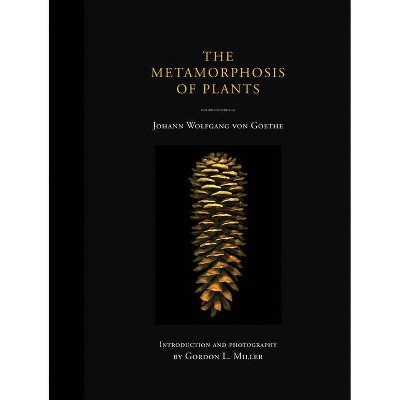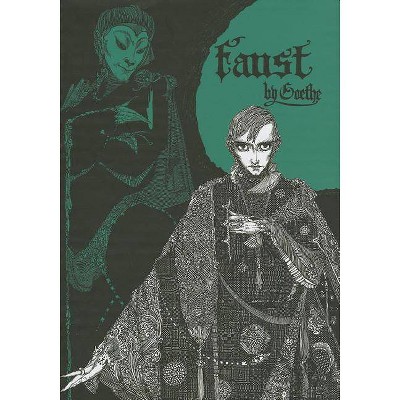The Metamorphosis of Plants - (Mit Press) by Johann Wolfgang Von Goethe (Hardcover)

Similar Products
Products of same category from the store
AllProduct info
<p/><br></br><p><b> About the Book </b></p></br></br>This edition . . . provides pictures situated in the text of all the plants to which [Goethe] refers, so that we can see for ourselves the specific points to which he is drawing our attention.--Henri Bortoft, author of "The Wholeness of Nature."<p/><br></br><p><b> Book Synopsis </b></p></br></br><b>Goethe's influential text, newly illustrated with stunning color photographs.</b><p><i>The Metamorphosis of Plants</i>, published in 1790, was Goethe's first major attempt to describe what he called in a letter to a friend "the truth about the how of the organism." Inspired by the diversity of flora he found on a journey to Italy, Goethe sought a unity of form in diverse structures. He came to see in the leaf the germ of a plant's metamorphosis--"the true Proteus who can hide or reveal himself in all vegetal forms"--from the root and stem leaves to the calyx and corolla, to pistil and stamens. With this short book--123 numbered paragraphs, in the manner of the great botanist Linnaeus--Goethe aimed to tell the story of botanical forms in process, to present, in effect, a motion picture of the metamorphosis of plants. This MIT Press edition of <i>The Metamorphosis of Plants </i>illustrates Goethe's text (in an English translation by Douglas Miller) with a series of stunning and starkly beautiful color photographs as well as numerous line drawings. It is the most completely and colorfully illustrated edition of Goethe's book ever published. It demonstrates vividly Goethe's ideas of transformation and interdependence, as well as the systematic use of imagination in scientific research--which influenced thinkers ranging from Darwin to Thoreau and has much to teach us today about our relationship with nature.</p><p/><br></br><p><b> Review Quotes </b></p></br></br><br>"Goethe would be delighted with this edition of "The Metamorphosis of Plants." It does what he hoped would eventually become possible and provides pictures situated in the text of all the plants to which he refers, so that we can see for ourselves the specific points to which he is drawing our attention. Reading it, I felt that here at last is the complete book, compared to which all previous publications of it seem like only a skeleton. Thanks to Gordon Miller's wonderful photography and careful selection of images, as well as his perceptive introduction, we can now all appreciate the extraordinary nature of Goethe's achievement. We can only be astonished at the detailed and painstaking observational work, together with the overall vision of the idea of metamorphosis, which biology today recognizes as the truth of the plant. This welcome edition makes Goethe's work more widely available than ever before, both for those who have not yet had the opportunity to read it, and for those who<br><br>"Goethe would be delighted with this edition of<br><p/><br></br><p><b> About the Author </b></p></br></br>Johann Wolfgang von Goethe (1749-1832), a towering figure in German literature, was the author of <i>The Sorrows of Young Werther, Faust, Italian Journey, The Theory of Colours</i> (MIT Press edition, 1970), and many other works. <p/>Gordon L. Miller teaches in the History Department and is Director of the interdisciplinary Environmental Studies Program at Seattle University.
Price History
Price Archive shows prices from various stores, lets you see history and find the cheapest. There is no actual sale on the website. For all support, inquiry and suggestion messages communication@pricearchive.us




















